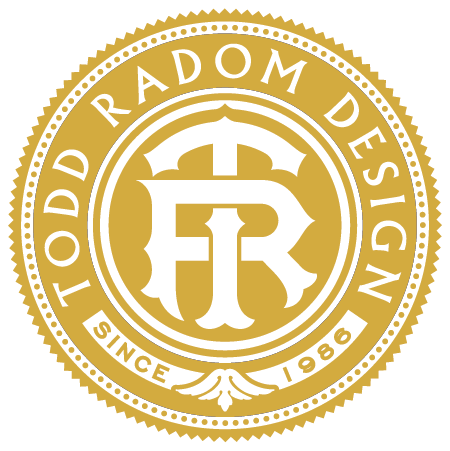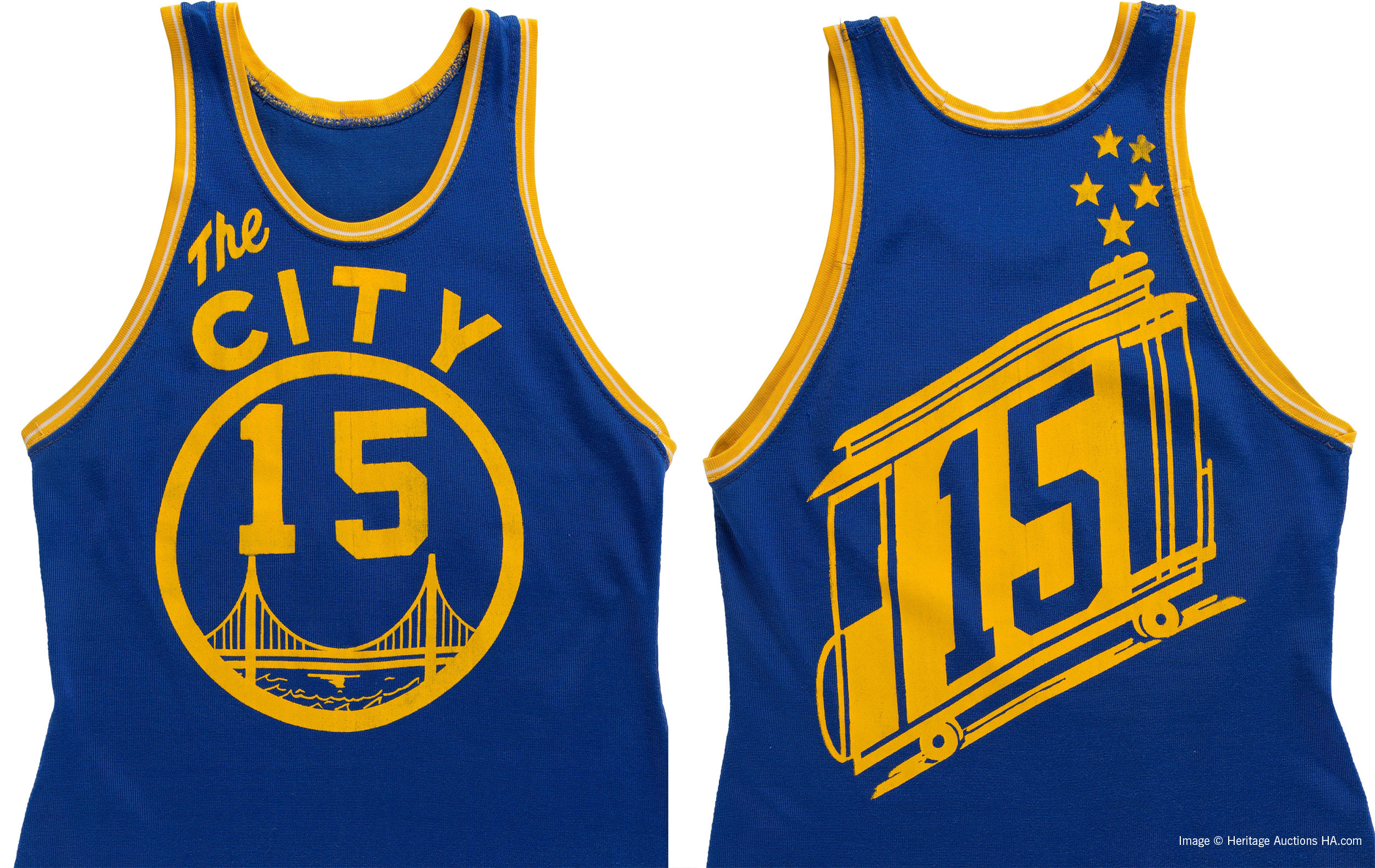The Warriors, Their Classic “City” Uniforms, and the All-America Guard Who Created Them
The Golden State Warriors are currently in the midst of an epic golden age. The Dubs are appearing in the NBA Finals for a fourth consecutive year and the team stands atop the list of most popular merchandise sold by the Association. Stephen Curry jerseys are a ubiquitous presence from coast-to-coast, outselling those of all other players. These familiar blue and gold uniforms are updated versions of ones that were first worn more than half a century ago, a set that ranks as one of the most distinctive looks in sports history.
Those uniforms garnered attention from the moment they were unveiled, on September 30, 1966, when the team was still known as the San Francisco Warriors.
The fronts of the jerseys featured a large circle, a stylized Golden Gate bridge nestled within, player number notched in atop the bridge. There are abstract waves underneath said bridge. Arcing around the top perimeter of the circle is “The CITY,” a novel identifier for the City by the Bay’s NBA team. The backs of the uniforms did not disappoint either, incorporating a unique design that featured a cable car, skewed upward, player number within, ascending toward five stars.
Al Attles, a key player on the 1966-67 squad and head coach of the 1974-75 world championship team, told the NBA that "(they) had the bridge on the front with the words The City and a cable car on the back... Imagine, we’re in New York, people from New York consider it the Big Apple, The City…I don’t know if it was intentional or not, but nobody wanted to be the first to take the jacket off. Finally, we take the jackets off and I’ll be darned if we don’t get a standing ovation from the New York crowd."
In an era of conservatively styled NBA uniforms, these stood out. The Cincinnati Enquirer helpfully provided a bulleted list of "key(s) to deciphering the hieroglyphics" on the team’s new togs. Others called the Warriors "the Bay City Billboards" and "the Jumping Signmen."
Warriors owner Franklin Mieuli is credited with the design of the uniforms, but that seems highly unlikely. Mieuli, a one-time advertising salesman with a flair for promotion (as well as self promotion) was a man given to hyperbole. A 1966 article in the Arizona Republic quotes Mieuli as saying "(w)hen I was associated with the Los Angeles Rams I came up with the idea to paint horns on the helmets," a statement that is demonstrably false. Rams halfback Fred Gehrke is the father of the decorated pro football helmet and was recognized by the Football Hall of Fame for his innovation. (When the Rams introduced their horned helmets in 1946 Mieuli had recently been discharged from the Navy and was working at his family’s nursery business in his native San Jose.)
Whatever the case, we can be certain that it was Mieuli’s idea to outfit his team in uniforms that simply identified them as coming from “The CITY.” Mieuli recalled childhood trips to San Francisco as being special. Sports Illustrated’s Frank Deford wrote "San Francisco was a shining never-never land to Franklin Mieuli as a child growing up in San Jose, 40 miles down the peninsula. His mother came from there, and they would often board a train and go to visit his grandparents and sometimes to shop. It was a highly impressionable experience for a child. 'It was always 'The City' to us,' Mieuli says reverently."
Mieuli, a sports broadcast pioneer in radio and television, certainly knew his marketing. Only four years removed from their first home, Philadelphia, the Warriors' plain vanilla uniforms gave way to something far more memorable and more specific to their location, even if they were widely mocked. "They laughed when the Yankees first wore pinstripes," said Mieuli, even if no evidence of that exists.
The man who designed these unique uniforms was East Bay native Walt Moreno, an art director at Foster and Kleiser, a billboard and outdoor advertising agency that eventually evolved into Clear Channel Outdoor. In the years before World War II Moreno starred for Alameda High's basketball team. After a stint in the Army Air Force, Moreno gained All-America honors as a guard on the College of Marin's 1948 Junior College National Championship team. He was also a rec league basketball coach and a skilled bowler.
Jim Gilmartin, writing in the Daily Independent Journal, a San Rafael newspaper, said "Moreno, an art director for Foster and Kleiser who is used to working on large-scale designs like billboards and pro basketball jerseys, thinks the Warriors outfits show class." The uniforms, described as "the biggest innovation since mini skirts," were supposed to have made their debut at Moreno's alma mater, the College of Marin, for a scrimmage on October 6. For reasons lost to history, they did not.
The 1966-67 Warriors won the NBA's Western Division, but lost to the Philadelphia 76ers in the Finals. The "City" uniforms were revived as part of the NBA's Hardwood Classics program in 2003 and the current primary look has been a mainstay since 2010.
In November 2017 the Warriors debuted a new uniform, one that celebrated Oakland, the team's longtime home. The jerseys make a bold, unforgettable statement that parallels their ancestral look of a half century ago, with "THE TOWN" placed atop a circular representation of Oakland's city logo. In 2019 the team will once again call San Francisco home as they head west across the Bay to the new $1 billion Chase Center. Whether their uniforms will read "The CITY" remains to be seen, but there’s no denying the originality and the visual appeal of the originals.



